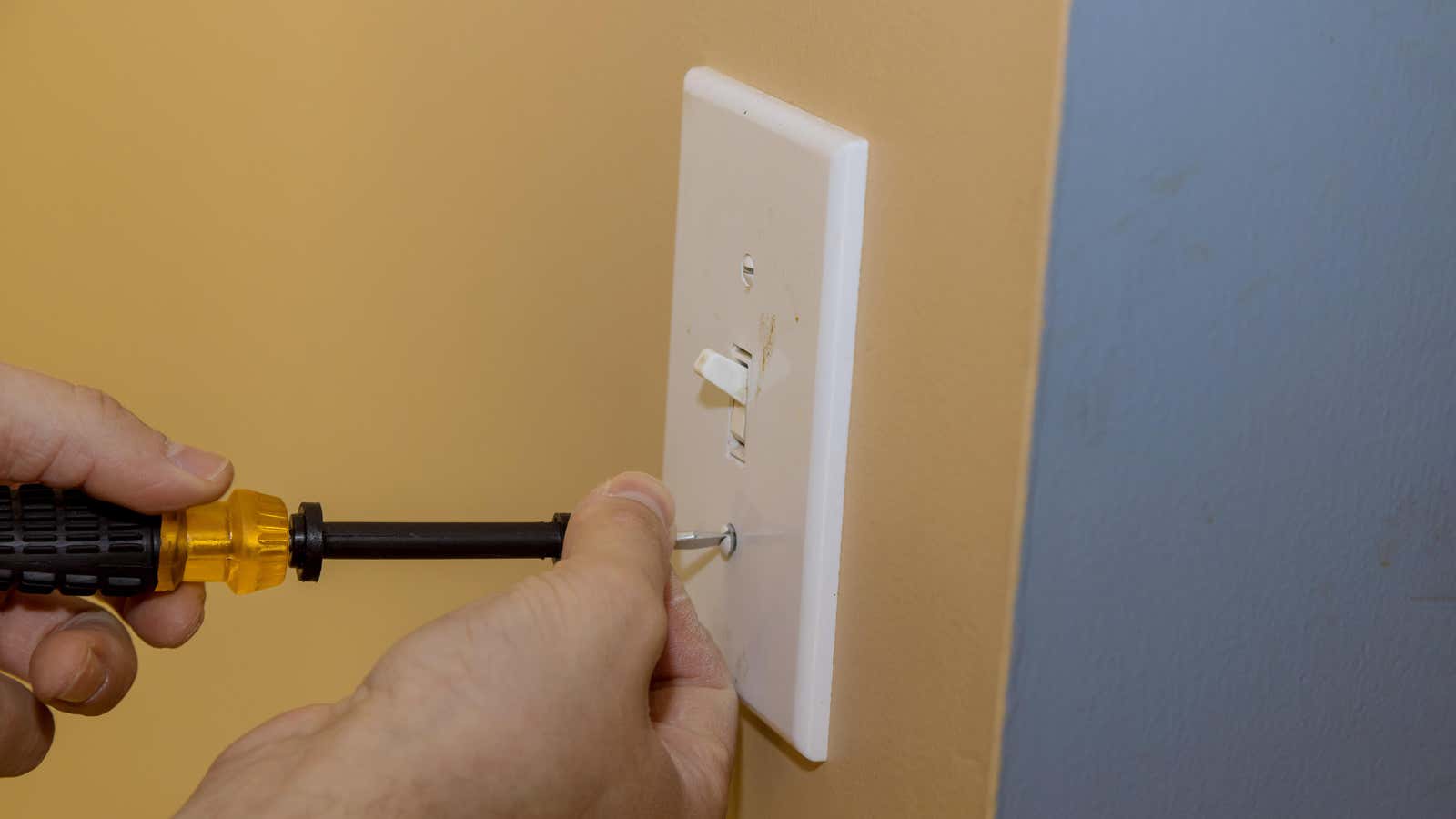How to Clean Electrical Outlets Without Killing Yourself

Most people don’t have to think about cleaning an electrical outlet, which comes with risk of electrical shock and all, but they can get dusty just like everything else in your home. Dust can accumulate on surfaces and prevent cords from making contact, and in extreme cases can even cause a fire. To keep your outlets looking and working well, they need to be cleaned from time to time. Here’s how to do it without the risk of electric shock.
How to clean a socket
It goes without saying that before cleaning the outlet, you should turn off the circuit breaker and make sure the power is off. If you don’t know which switch to flip, you can use a lamp plugged into an outlet and turned on to indicate when the power is off. At this point, I like to repeatedly announce to the whole house that I’m working on an outlet and not touch the switch box until I say everything is in order. Sometimes I attach a dated note to the box: “STOP, don’t flip the switches.” That’s because if one of the helpers notices the flipped switch and decides to turn it back on while you’re working, the results can be… well, shocking.
After safely disconnecting the power, remove the outlet cover – this usually requires a flat-head screwdriver. You can use a magnet or a piece of tape to keep the tiny screws from being lost. Sometimes I glue the screws to the countertop or a large piece of cardboard to keep them secure.
You can soak the outlet cover in warm, soapy water while you move on to the next steps, and come back for it later. After the cover is removed, you must vacuum the dust. Sometimes removing the outlet cover will introduce dust from where the outlet comes out of the wall; a vacuum is also useful for this. Then use compressed air or a compressor at a lower pressure setting with a nozzle to blow dust out of the crevices. Never plug anything into a power outlet, but you can use a cotton swab and isopropyl alcohol to wipe off stubborn dirt. If you need to use rubbing alcohol, apply it to the swab and not directly to the hole so you don’t wet the hole.
Let everything dry and put back together.
After everything is cleaned, remove the outlet cap from the soapy water, rub it well, and then rinse with clean water. Check the socket itself to make sure it is dry, and then dry the socket cover thoroughly; remove the screws and replace them. Once everything is assembled and completely dry, you can turn the breaker back on. Finally, I announce that I have finished the socket and remove the note from the switch box.